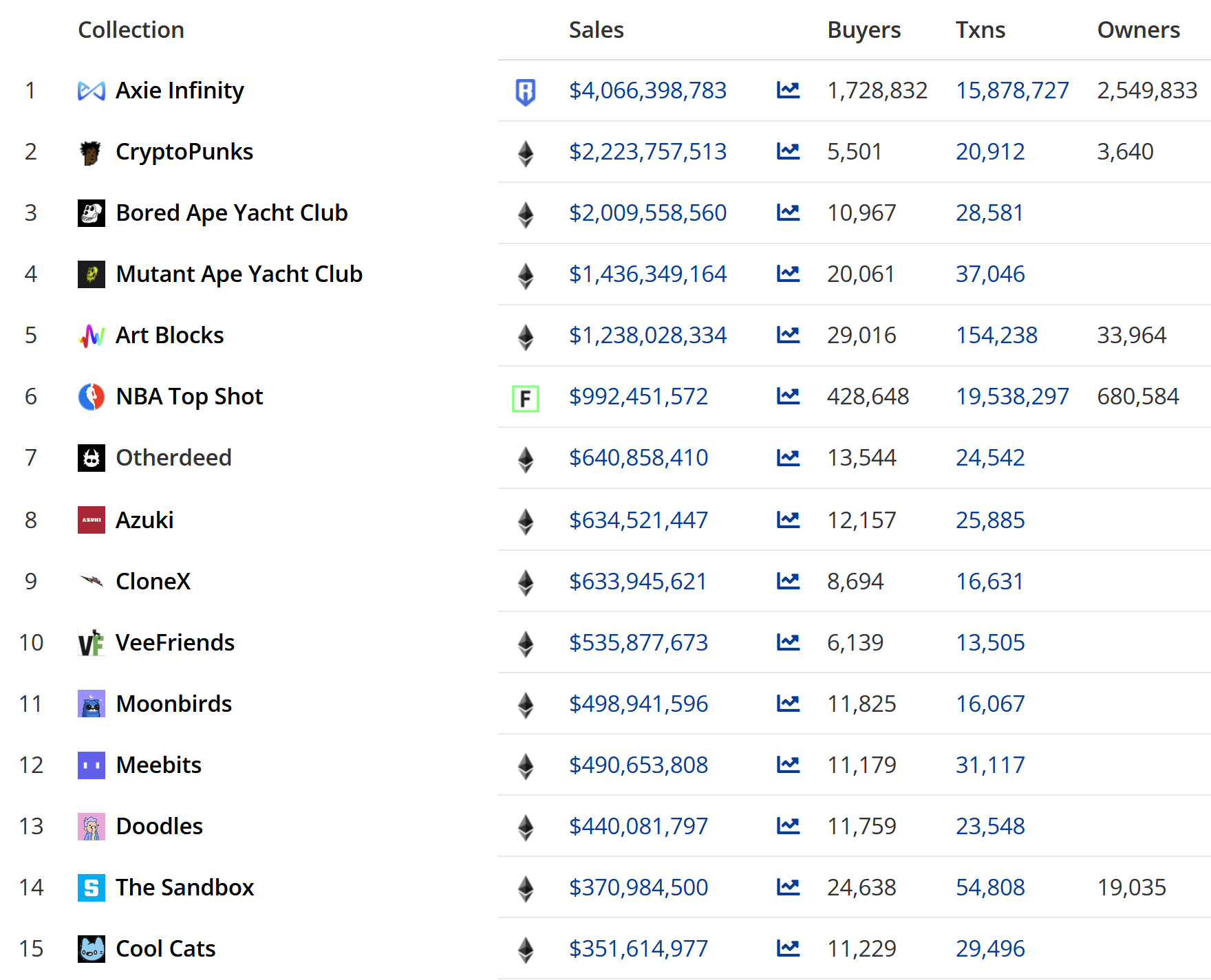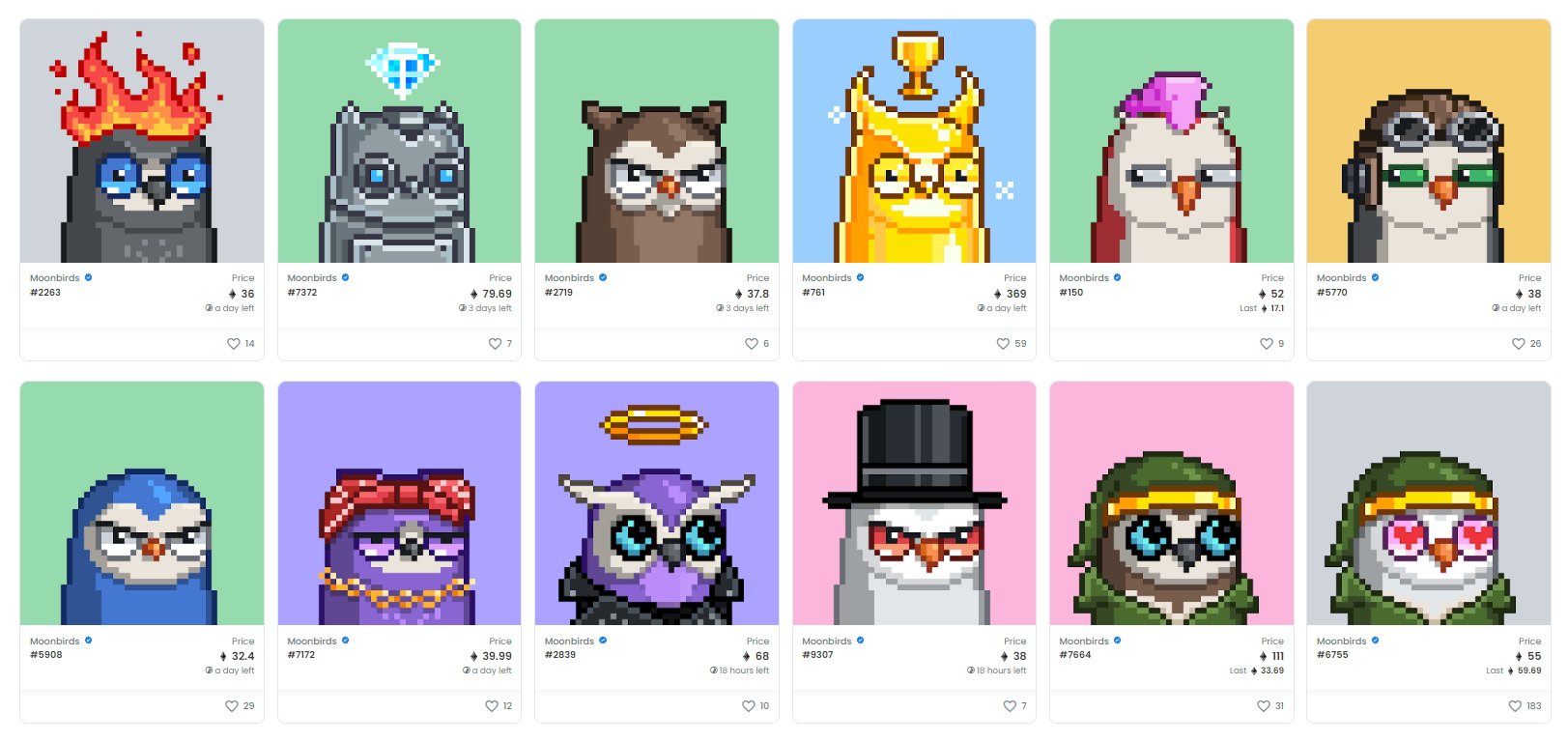Since the market boom in 2021, hundreds of NFT projects have been minted and new ones are being added daily. Only a few of these collections - often known as Blue Chip NFTs - have been able to establish themselves over a longer period of time. An illustration of the blue chip debate using the Moonbirds project.
The Moonbirds were the number one topic of conversation in the NFT sector last week. In the ten days since they were minted, the collection recorded a total trading volume of more than 150'000 ETH, equivalent to around $475 million, outstripping any other NFT project. Aside from the reasons for the massive interest, the Moonbirds' success sparked a new debate on the status of blue chip NFTs.
What are blue chips in the traditional financial world?
Blue chip stocks are investments that are considered safe, long-term investments and generate steady returns on invested capital. Typically, blue chip companies have been around for many years to decades, are well capitalized and have a long track record; even in difficult times for the markets. For example, companies such as Coca Cola, IBM, Disney and General Motors are considered "blue chips" in the traditional financial world.
Investing in a blue chip is considered less risky than more speculative bets such as Penny Stocks or companies in the start-up phase. The original etymology of the term goes back to the classic 3-color poker chip set, where the blue chips have the highest value. In the 1920s, when the term was first used, stocks, priced above $200 were the blue chips of the day.
Blue Chip NFTs
In terms of NFTs, blue chips refer to collections whose value has skyrocketed - with market watchers believing these digital assets will maintain their high valuation for a long time. Factors such as return on equity (ROA), equity-to-debt ratio or other metrics aren't really relevant to NFT projects. Factors that determine blue chip status include overall brand awareness and community engagement. In addition, it is the use cases and benefits, as well as prominent proponents, that determine a floor price and sales volume.
In the traditional financial world, blue chips are about longevity, which is simply not yet possible with NFTs. CryptoPunks is one of the first NFT collections and it has only been around since 2017. The most successful NFT project to date, Bored Ape Yacht Club (BAYC), has been around since April 2021. With hundreds of projects coming to market since the NFT explosion in the spring of 2021 and more coming every day, it is impossible to keep track of them all.

In general, the term blue chip NFT means that the project will maintain a high value far into the future. In other words, the collection could behave like a traditional blue chip stock in the future and survive through multiple market cycles. Thus, there is no "objective" definition of the term and in many cases market participants simply describe their favorite projects as blue chips.
Moonbirds: the next blue chip?
Similar to the Bored Ape Yacht Club, Moonbirds are meant to bring other benefits in addition to the classic "profile picture" on social media. Holding an NFT unlocks membership in a private club that scales over time. For example, users gain access to an NFT-protected Discord server where information about upcoming NFT drops, events, and other developments in the field are shared.

The collection was minted at a price of 2.5 ETH per piece and the smart contract includes 5% royalties on each secondary sale, credited to the creators. According to the official website, the owners of the NFTs also have full intellectual property rights to them. Currently, the minimum price (floor) of a Moonbird is 32 Ether, which is equivalent to almost 100'000 USD. Some users are convinced that the high volumes and prices already argue for the classification as a blue chip NFT. However, the collection is less than two weeks old and the buzz around the cute birds might disappear as quickly as it appeared.




